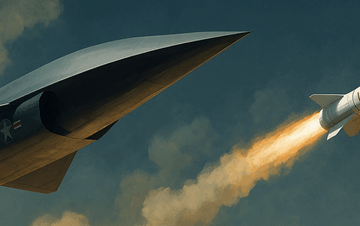The Trump administration’s decision to award the sixth-generation fighter project to Boeing is a welcome one. However, it only partially addresses the country’s airpower dilemma and how it intends to support allies in the future.
From the perspective of the United States government and the US Air Force (USAF), awarding the contract to Boeing is a welcome choice since it ensures that there are at least two fighter manufacturers left in the United States; there were dozens at the end of the World War II. This means that the production of fighter aircraft is no longer a seller’s market as when the USAF shortsightedly awarded both the F-22 and F-35 contracts to Lockheed, which effectively gave leverage to that corporation.
Now, by awarding the contract to Boeing, the Trump administration ensured that there will be multiple players in the combat aircraft manufacturing sector. Keep in mind, Northrop Grumman is manufacturing the B-21 stealth bomber. This leaves three prime contractors making combat aircraft.
The decision is also a good one because other nations are developing their own sixth-generation aircraft. The French and the Germans are collaborating on a Future Combat Air System while Britain and Japan are in a partnership to develop their own aircraft. The United States, therefore, could not afford to be left behind in this technological race.
Further, the fact that the F-47, as the plane is designated, is to be mated with a semi-autonomous drone is a welcome outcome because this acts as a force multiplier and gives the country an export drone for partners. For the record, it is time to stop playing to the egos of pilots and labeling drones as unmanned aerial vehicles (UAV). The Russians and Ukrainians have no problems with nomenclatures and, instead, use drones to effectively carry out combat operations.
The Boeing award does not mean Lockheed is now left to languish. The production of the F-35 will, unless terminated, continue into the 2040s. Lockheed also continues to benefit from the excellent record and affordability of the F-16 Viper. Despite attempts to close the production line or move it offshore (India is one favored destination) the jet has proved to be so popular with partner air forces that Lockheed has a backlog of 128 fighters at its Greenville, South Carolina, plant and sees the potential for the sale of up to 300 aircraft worldwide.
While the F-47 is a welcome addition to the future arsenal of the USAF, it will be hugely expensive as it will cost in the hundreds of millions of dollars, thus making a large buy difficult. One should remember that the original plan was to buy over 800 F-22s but cost escalation led to only 187 aircraft being procured. Thus, it is likely that a small number of these airplanes will be purchased, leaving the USAF to figure out how to maintain its force levels in the face of escalating cost.
The former Air Force Chief of Staff, Gen. (Ret.) Charles Brown Jr., had an answer when he suggested that the force needed a high-low mix of aircraft saying that you do not drive your Ferrari to work every day. Brown was calling for a low-end fighter that could carry out the day-to-day missions which are currently fulfilled by the F-16. Yet building new F-16s, he argued, was not an option since it was too difficult to upgrade the aircraft with modern software, hence the requirement for a clean sheet design.
A low-end fighter still makes sense, because the United States must maintain squadron numbers which is difficult to do with expensive aircraft like the F-35 and the future F-47. And this might be a project for Lockheed, giving the company another incentive to remain in the fighter aircraft game.
The problem for many allies is that they cannot afford a fourth-generation-plus fighter. This leaves a hole for the Chinese and Russians to fill. The time has come, therefore, to go back to a 1960s idea of an export fighter. In those days it was the F-5 Freedom Fighter. The plane was sold in Asia and even Switzerland and for decades served in the air forces of these nations.
The United States, in its current arsenal of F-16s, F-15s, and F-35s does not have a plane that could be an affordable fighter. It is developing an excellent candidate to serve in this role—the T-7 Red Hawk trainer. The USAF is committed to acquiring 351 of these aircraft, which will allow for an economy of scale to make the aircraft an affordable fighter for the world. If the aircraft is upgraded with a basic radar and the ability to deliver weaponry, and perhaps a more powerful engine, it would be highly competitive in the global fighter market. Boeing does have plans to convert the plane into an export fighter (provisionally labeled the F-7) but this would require a policy choice by the Trump administration to fund this modification.
The fact is that friendly nations would like to buy American since it helps build the relationship with the United States and reinforces American security interests in some of these countries—Latin American countries are a case in point given their limited military budgets. Even a country like Brazil with its indigenous aircraft industry could be tempted by an F-7, which would be the low-end complement to its Gripens.
In the end, the F-47 is a welcome development, but the United States needs to look after its allies. They have the requirements for a new fighter but lack the budgets to buy expensive state-of-the-art aircraft.
Amit Gupta is a Senior Fellow at the National Institute for Deterrence Studies.
About the Author

Amit Gupta
Amit Gupta is a Senior Advisor to the Forum of Federations Ottawa. The views in this article are his own.





This is a fantastic analysis that highlights the strategic importance of diversifying the U.S. defense industrial base—well done! Do you think the development of a low-cost export fighter like the F-7 could realistically counter growing Chinese and Russian influence in global arms markets?